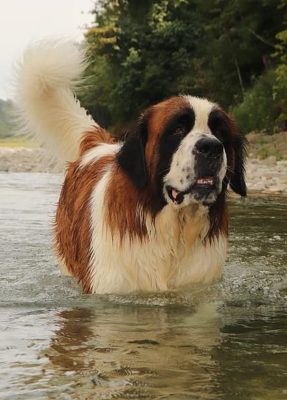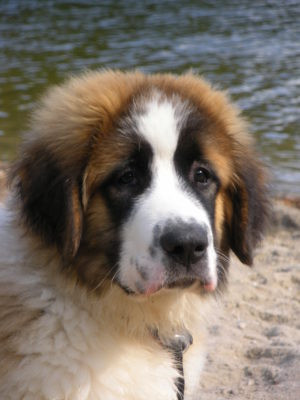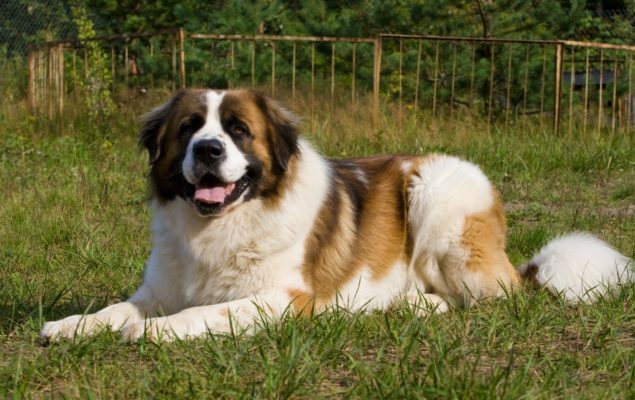Moscow Watchdog
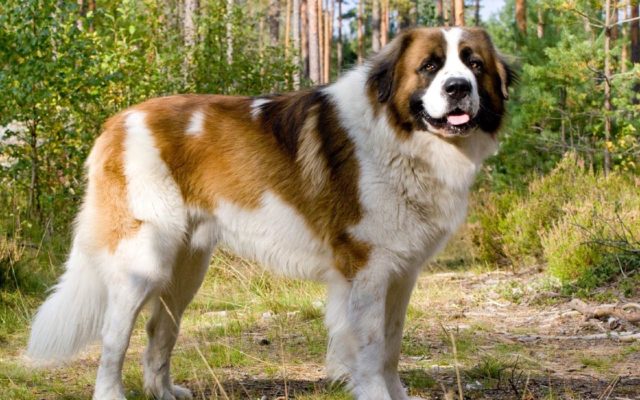
As a result of breeding, the Moscow Watchdog has inherited a calm character and endurance. It unconditionally obeys the master. From the Caucasian Shepherd, she got confidence and dignity. It is a fearless and strong-willed dog that is capable of dominance. More often, Moscow Watchdogs are bred as guards.
Table of Contents
Breed Information
| Another Name | Moskovskaya Storozhevaya Sobaka |
| Origin | Soviet Union |
| Height | Males 65-78 cm Females 70-75 cm |
| Weight | Males 55-65 kg Females 45-55 kg |
| Fur | Long |
| Color | Red-and-pedigree, spotted |
| Lifespan | 9-12 years |
| FCI Classification | Breeds outside the FCI classification |
| Group | Watchdogs, guard dogs |
| Price | From $200 |
Breed Photos
Origin History
The breed came about because of a shortage of dogs during World War II. In the late 1940s, the Red Star Kennel received an order from the government to breed guard dogs. The USSR needed dogs that would perform protective, guarding functions and serve under extreme conditions. Soviet breeders did the impossible. At that time, the Red Starbase could not boast a variety of dogs. Most were brought in from Germany. A few years later, the kennel presented not one but four breeds that corresponded to the state order. Among them was the Moscow Watchdog.
The breed representatives have mixed blood of Eastern European Shepherds, Russian Crested Hounds, and St. Bernards. Caucasian shepherds added temperament and natural anger. In 1950 for the first time, Moscow Watchdogs were presented at the show. Eight years later, the appearance standard was approved. At the same time, until 1985, the breed was not officially recognized in the USSR. Today, representatives of Moscow Watchdogs can be found on the expanses of the CIS. Rarely dogs can be seen in the Czech Republic and Poland. In other countries, the breed is unpopular. For many international associations, Moscow Watchdogs remain dark horses.
Appearance
At first glance, the Moscow Watchdog is a dog with the menacing muzzle of a Saint Bernard and the shagginess of a Caucasian. Moscow Watchdogs have a solid elongated body. A big head with a wide forehead. A prominent jaw with a scissor-like bite. The lips are fleshy black and have 42 white teeth. If a few teeth are knocked out or broken, it is not considered a defect. Small, deep-set eyes. Triangular ears are slightly rounded at the bottom.
Animals have straight, parallel legs. Large paws are rounded and/or oval. The tail of the dog is unique in its thickness. The double coat consists of ponytail hair and a thick undercoat. Bitches are endowed with less hair due to the modest scavenger hair. White with red, reddish-black, black-red, or sable spots are allowed. The chest, paws, and the end of the tail should be white.
Character
As a result of breeding, the Moscow Watchdog has inherited a calm character and endurance. It unconditionally obeys the master. From the Caucasian Shepherd, she got confidence and dignity. It is a fearless and strong-willed dog that is capable of dominance.
More often, Moscow Watchdogs are bred as guards. In this case, they quickly adapt and become the favorites of the family. Quickly find a common language with children, love to play, and not throw themselves at people they know. From them, you can rarely hear barking. But if they feel threatened, they attack quickly. Aging, as with all large animals, occurs closer to three years. They will get along with other pets, provided they grow up in the same house from an early age.
Care
How thoroughly your dog is groomed depends on weather conditions and the season. Comb your dog once or twice a month. If a Moscow Watchdog lives in a house, even more often. Especially during active shedding, which is observed twice a year. Check the ears and eyes every day. Wipe them with a damp cloth or wipe. Clip claws once a month or as needed. Do not bathe often. Three to four times a year is enough. It is better to choose a spacious aviary as the pet’s habitat. Moscow Watchdog’s imposing size makes it uncomfortable to keep in an apartment.
Training
It is advisable to give the Moscow Watchdog training to an experienced specialist. Otherwise, training will be an excellent option to test the owner’s nerves for strength. Dogs learn quickly. But they can be stubborn if they don’t connect with a handler or family member. If they don’t take the time to train, Moscow Watchdogs become uncontrollable. And uncoordinated communication with people leads to negative consequences.
From the first days of your pet’s arrival in the house, introduce strict prohibitions. And continue until the pet grows up. Also, pronounce commands categorically. If you consider a Moscow watchdog solely as a pet, you can stop at-home training.
Common Diseases
Representatives of the breed suffer from hip dysplasia. Before buying a pet, it is better to check the pedigree for the disease. On average, the disease manifests itself after four or more generations. Allergic reactions in animals are incurable. The only thing left to do is to use antihistamines. Often there is a tendency to obesity. To avoid, watch the dog’s diet and regular exercise. Muskies who are fed an unbalanced diet get fat in a matter of months.
Nutrition
The reference diet is considered to be lean meat and by-products, vegetables, porridges. Buckwheat, rice, and millet are suitable. Sea fish (cod, saffron cod) and dairy products are welcome. Among vegetables, choose stewed cabbage, pumpkin, beets, tomatoes, and potatoes. Completely exclude:
- mushrooms;
- legumes;
- baked goods, pasta, and flour;
- sweets and fatty foods;
- chicken bones;
- river fish.
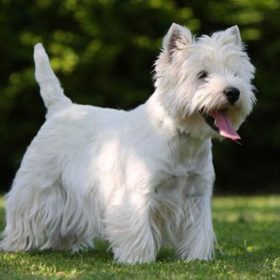 West Highland White Terrier
West Highland White Terrier Saint Miguel Cattle Dog
Saint Miguel Cattle Dog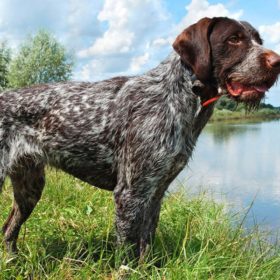 German Wirehaired Pointer
German Wirehaired Pointer Spinone Italiano
Spinone Italiano Bluetick Coonhound
Bluetick Coonhound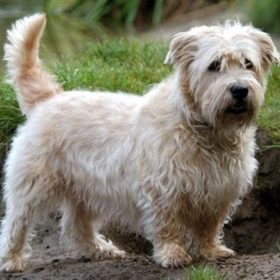 Glen of Imaal Terrier
Glen of Imaal Terrier